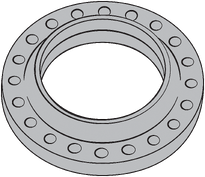What is Hard Turning & When Should You Consider It?

Hard turning is defined as the process of single point cutting of part pieces that have hardness values over 45 Rc.
Typically, however, hard turned part pieces will be found to lie within the range of 58-68 Rc. The approach to machining hardened steel depends on the degree of hardness and its depth (if case hardened). The hard turning process is similar enough to conventional “soft” turning that the introduction of this process into the normal factory environment can happen with relatively small operational changes when the proper elements have been addressed.
Hard turning can certainly be considered for most pre-grind applications, which are followed by an abbreviated grinding cycle. In some cases, the hard turned surface may complete the operation and will completely eliminate the grinding cycle altogether.
If one were to list the current applications of hard turning, it would certainly be a voluminous document. On a daily basis, parts are being hard turned in the following industry segments: automotive, bearing, marine, punch and die, mold, hydraulics and pneumatics, machine tool and aerospace. While these industries are representative, this list is certainly not conclusive and new applications and industry segments are constantly being added.
The typical materials, which are routinely hard turned, include those of the following broad category descriptions:
- Steel alloys,
- Bearing steels
- Hot and cold work tool steels
- High speed steels
- Die Steels
- Case hardened steels
- Waspoloy, Stellite and other aerospace alloys
- Nitrited irons and hard chrome coatings
- Heat treatable powered metallurgy
- Unique hard materials and aircraft types that fall within the hardness range
Hard turning is a viable process that has real and measurable economic and quality benefits. This is particularly true with a machine tool that has a high level of dynamic stiffness and the necessary accuracy performance. The more demanding the application in terms of finish, roundness and size control, the more emphasis must be placed upon the characteristics of the machine tool.
 |